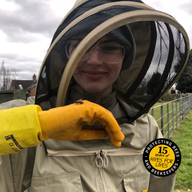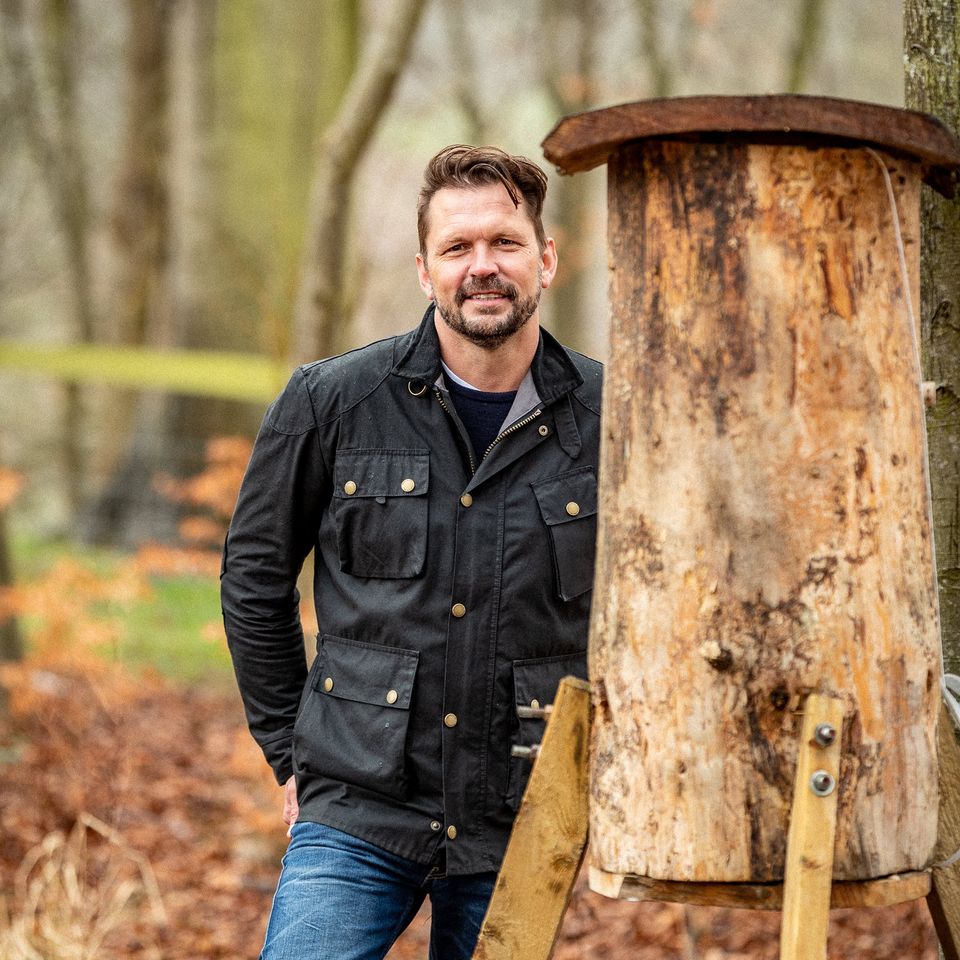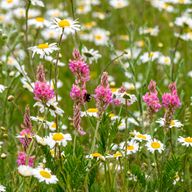
We’ve got a new bee-buddy in the Rowse hive: the nation’s favourite farmer and conservationist; Jimmy Doherty.
A regular on our TV screens, Jimmy shares our passion for bees, wildlife and our wonderful countryside. He’s been helping us learn more about Britain’s pollinating insects and how we can all do our bit to help them thrive!
Jimmy Doherty’s 5 Top Ways to Help British Pollinators
1. Plant nectar-rich flowers in your borders, pots, and window boxes
Did you know there are over 1,500 species of insect pollinators in the UK? This abundance of pollinators means there’s currently fierce competition for vital nectar sources during the foraging season, particularly in the summer months. So ensuring that bees, moths, butterflies, and beetles all have enough good food sources is vital.
One of the most effective ways to give a helping hand to pollinators is to plant nectar-rich flowers in your garden. Peonies, lavender, asters, and dahlias are all great examples of plants that look beautiful in bloom and provide plenty of nourishing nectar for pollinators.
If you don’t have a garden, you can plant pollinator-friendly plants in pots on a balcony, or even in hanging baskets and window boxes, too.
2. Let a section of your garden grow wild
Any flowers that you plant in the garden will benefit bees, butterflies, and other pollinators. If you’re ready to take your conservation efforts to the next level though, why not let a patch of your garden grow wild?
Pollinators love variety – plants of different heights, shapes and sizes provide an abundance of interesting nectar sources for insects that forage up to 20km a day for nectar. So, scattering some wildflower seeds in your rewilded area gives pollinators plenty of choice.
Rewilding doesn’t just mean sowing wildflowers though – letting weeds grow in your garden can also be hugely beneficial for pollinators. In fact, new research from the Laboratory of Apiculture and Social Insects, funded by Rowse as part of their Hives for Lives program, found that certain weeds are actually preferred by pollinators! White clover, ivy, and dandelions are particularly popular.
3. Reduce your use of harmful chemicals in the garden
If you’re giving weeds a chance to grow in the garden, why not also minimise your use of chemicals too? Pesticides and insecticides can do more damage than good – they may help to keep pests at bay, but they can also harm bees, butterflies, beetles, and other pollinators too.
Instead of using chemicals in the garden, try using deterrent plants instead! Lavender plants can deter caterpillars, petunias ward off aphids, and onions can even see slugs on their way. And if you have a vegetable patch to protect, try placing these protective plants around your veggies to obstruct those pesky predators.
4. Give weary pollinators a place to rest
Not all pollinators live in managed hives like the honey bee – plenty of them fly solo! For pollinators without a permanent home, creating a safe space for them to rest can improve their chances of survival.
You may have heard of a ‘bee hotel’ before – they’re a fantastic option to house foraging solitary bees, and available to purchase at most garden centres or even online. You can even find varieties that have space for other pollinating insects, too. But why not take it a step further? You can build your very own pollinator palace from scratch using some wood, hollow stems or bamboo canes, and a few nails!
5. Educate yourself and others about the priceless world of pollinators
Jimmy joined us at Blenheim Palace Estate, where we’re sowing 52 acres of native wildflowers and we are planting 124 miles of natural hedgerow as part of a major conservation project in Oxfordshire, and answered some of your buzzing questions!
Want to learn a surprising fact or two?
Bee-curious with Rowse & Jimmy Doherty
Read more about our partnership with Blenheim Estate here.



